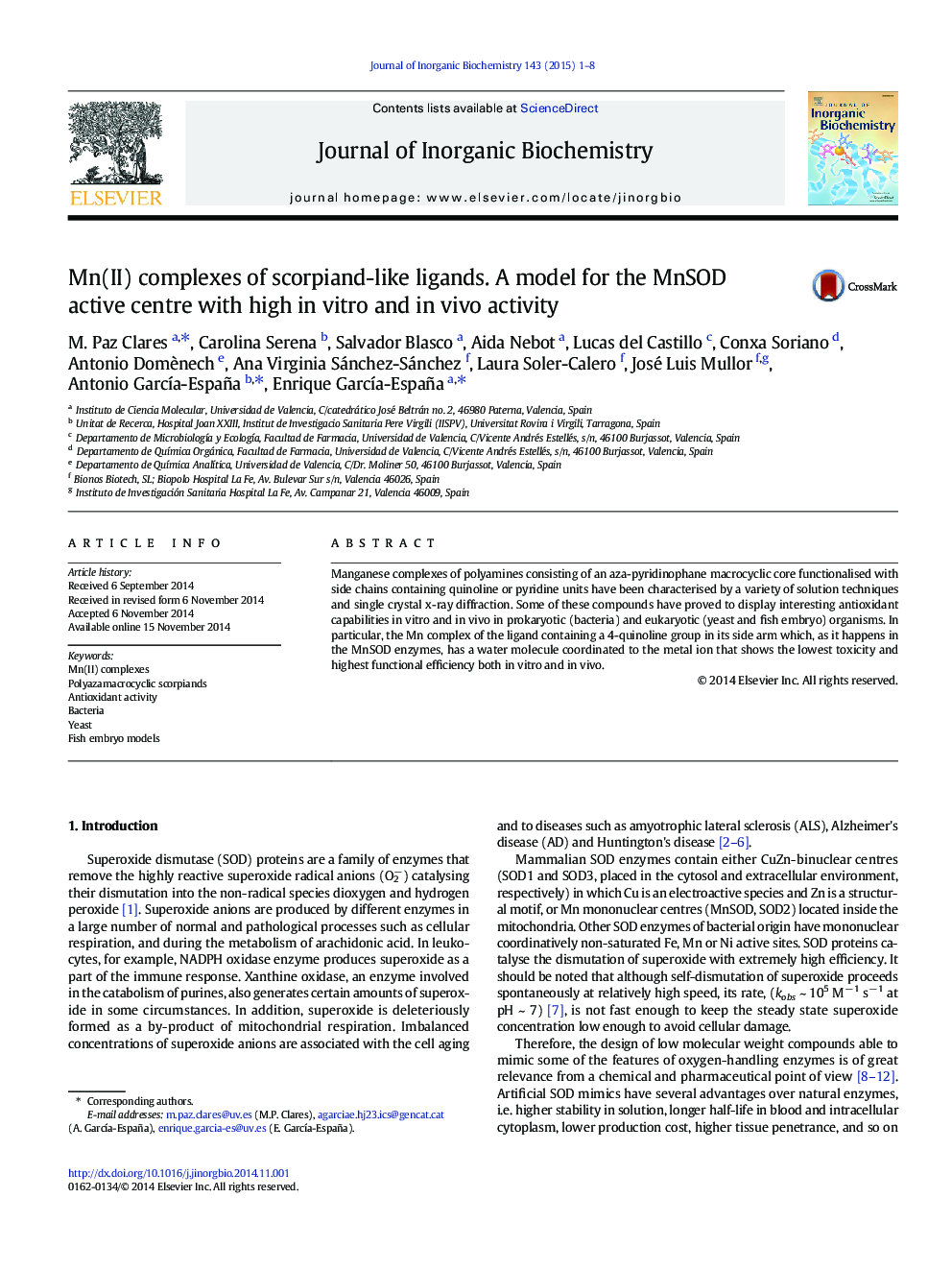| Article ID | Journal | Published Year | Pages | File Type |
|---|---|---|---|---|
| 1316557 | Journal of Inorganic Biochemistry | 2015 | 8 Pages |
•Scorpiand polyazamacrocyclic manganese complexes that mimic MnSOD•Complexes resistant to atmospheric oxidation•The most active complex has a water molecule in the Mn coordination sphere.•The compounds show protective effects in bacteria and yeast.•The complexes with quinoline show activity at 10− 6 M concentration in fish embryo.
Manganese complexes of polyamines consisting of an aza-pyridinophane macrocyclic core functionalised with side chains containing quinoline or pyridine units have been characterised by a variety of solution techniques and single crystal x-ray diffraction. Some of these compounds have proved to display interesting antioxidant capabilities in vitro and in vivo in prokaryotic (bacteria) and eukaryotic (yeast and fish embryo) organisms. In particular, the Mn complex of the ligand containing a 4-quinoline group in its side arm which, as it happens in the MnSOD enzymes, has a water molecule coordinated to the metal ion that shows the lowest toxicity and highest functional efficiency both in vitro and in vivo.
Graphical abstractStudies in vivo with Mn(II) complexes of aza-scorpiand ligands performed in bacteria, yeast and fish embryos denote very appealing properties and antioxidant effects, which match or improve some of the best SOD2 mimics up to now reported.Figure optionsDownload full-size imageDownload as PowerPoint slide
